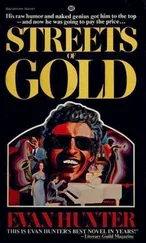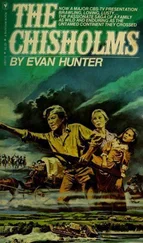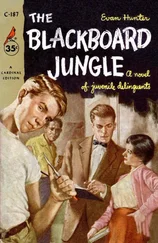“Which is that I’m going to marry you.”
My instructor at Gunter Field in Montgomery, Alabama, was a man named Ralph Di Angelo, who had been a civilian pilot before the war, and who — because of the extreme need for trained pilots — had been taken into the Army with a first lieutenant’s commission and immediately assigned to Gunter, where he taught what the Air Force called Basic Flying. Di Angelo was a Service Pilot, and because there was a tiny letter S on his wings, we all called them Shit Wings.
I had gone from Preflight School at Maxwell Field to Primary Flying School in Orangeburg, South Carolina, and from there had reported directly and without furlough to Gunter Field. There were six flying squadrons on the field, each with about a hundred cadets in them. I was in the 379th School Squadron, Class 44J, the 44 designating the year I was expected to be awarded my silver pilot’s wings, the J designating the month and date this event would take place, the first half of May, hopefully.
This was my third day at Gunter, and nobody including myself was feeling too terribly happy just then because we had not been given any leave after Primary and we’d already been told there’d be no Christmas furloughs, either. My father had made plans to come down to Montgomery to visit with me on Christmas Day, but Montgomery was a far cry from Chicago, and besides, I was getting very very tired. At Orangeburg, I had flown the PT-17, which was possibly the most rugged plane ever built, strong enough for aerobatics like snap rolls and Immelmanns, with a fixed-pitch prop and a 225-horsepower Lycoming engine, blue with yellow wings — my instructor called his plane “Yellowjacket,” the name stenciled onto the fuselage just back of the cowling, with a sting-tailed bee, blue with black stripes, yellow-winged like the plane itself, hovering over the black lettering.
I’d had a total of seventy hours in that plane, my instructor being a man who had once run a small airport in Iowa and who was now doing his bit for the Army by making life miserable for aviation cadets. His name was Captain Felix Burmann, and he was a son of a bitch down to his boots. It was rumored that the obstacle course at Maxwell Field (where he had also taught) was named “The Burma Road” in his honor, it being a tortuous winding exhausting piece of real estate that snaked its way around the officers’ golf course, and then down by the river as cadets jogged their little hearts out around it. Son of a bitch or no, he had taught me to fly, and I was feeling like a pretty hot pilot by the time I got to Gunter and was introduced to the biggest damn airplane I had ever seen up close in my life, the BT-13, which was fondly, ha, called the Vultee Vibrator, or so Lieutenant Di Angelo told us the first day we marched out behind him to the flight line.
The lieutenant was olive-complected, with curly black hair, dark brown eyes, and a black mustache. Short and somewhat chunky, he kept a dead cigar stub clamped between his teeth at all times, reminding me of Mr. Fornaseri who ran the candy store on Division and Dearborn back in Chicago and who would not be caught dead without his guinea stinker in his mouth. Mr. Fornaseri was from Palermo, and it was reasonable to believe that Lieutenant Di Angelo could have easily blended with the population there — though how he would have fared in Milan was another matter. He came, he told us, from Elmira, New York, and had quickly added, “Not the prison there,” a quip we were all too frightened to laugh at. He had then gone on to say that we five cadets would be taught personally by him during our stay at Gunter Field, and that we would be doing all our flying in the BT-13, “this airplane here, which is fondly called the Vultee Vibrator, as you will soon find out.”
“It’s got an unpleasant reputation,” he had said, “but you’ll learn to develop a great deal of respect for it. I know it looks enormous to you, but that’s only because it is; the engine under that housing’s got four hundred and fifty horses in it. I realize you’re all aces already, but you’ve never flown anything with a controllable pitch propeller, or mixture controls, and this is also going to be the first time you’re flying without a helmet and goggles because there’s a canopy to close over your head, as you may have noticed. You’ll be wearing earphones instead because you’ll be in constant radio contact with the tower — that’s another first, you’ve never flown a plane with a radio in it before.
“Now you all heard what the squadron commander told you a little while ago, and I’m going to repeat it now because he was absolutely right, and you might as well understand it. Nobody’s going to coddle you here at Gunter. Both me and this airplane are going to be a lot less forgiving of your mistakes. In Primary, you learned how to take an airplane up and how to bring it down, but here in Basic we’re going to teach you to use it as a tactical weapon, and I can tell you the pressure’s going to be a lot tougher than it was in Primary, no matter where you went to Primary — we get them here from all over, believe me, and even the best of them have been known to bawl in their second week. The C.O. asked you to look at the man on your left and then at the one on your right because one of you was sure to wash out of here and end up in navigator or bombardier school. Okay. I’m telling you now that out of you five cadets, there’s a strong possibility only three of you will make it through Basic, and out of those three, only one of you might get through Advanced. So you’d better listen hard and keep your heads moving at all limes because you’re here to learn to fly and not to fool around. You’ll notice that there’s a little picture of a burning pitchfork painted behind the cowling of my plane there, and that the name of the plane is The Eighth Circle,’ and whereas I don’t want to frighten any of you aces, I also want it clear that I’m going to make life hell for you if you don’t learn to fly the way I want you to fly.
“Now I want one of you to get into that front cockpit and the rest of you on the wings there, and I’ll try to familiarize you with the instruments and controls, after which you can feel free to climb into any plane on the field and learn that cockpit inside out and backwards because you’ll be taking a blindfold test on it day after tomorrow. You, what’s your name, you get in the cockpit. It’s going to feel a little strange at first, but don’t let that bother you.”
That was our first-day introduction to Lieutenant Ralph Di Angelo, who seemed about as pleasant as Captain Burmann, the terror of Orangeburg. (I wondered, in fact, which obstacle course had been named after him.) Yesterday, my second day at Gunter, I had gone up for my orientation flight, and today Lieutenant Di Angelo gathered the five of us around him at one of the long tables in the squadron building and chewed on his cigar and said, “Cooper, you want to pay some attention here, or do you want to wash out on your third day?” to which Cooper replied, “No, sir, I’m listening, sir,” and Di Angelo said, “Yes, then keep your head moving,” and cleared his throat, and in his lovable gravelly Elmira, New York, voice said, “Today we’re going to have a demonstration of take-off with the stabilizer back. You’ll remember that yesterday I showed you how to fly with the power off, and the stabilizer trimmed for a glide, and you’ll remember how hard it was to hold your nose down in flying position when we turned the power on again and rolled the trim-tabs back. As a final check before we fly over to Taylor Field today, we’re going to deliberately take off with the stabilizer rolled back about three-quarters, that’s approximately the position for landing. I want you to remember that this is what might happen if you forget your cockpit procedure before take-off or are shooting follow-through landings and aren’t quick enough to neutralize your trim-tabs.
Читать дальше












